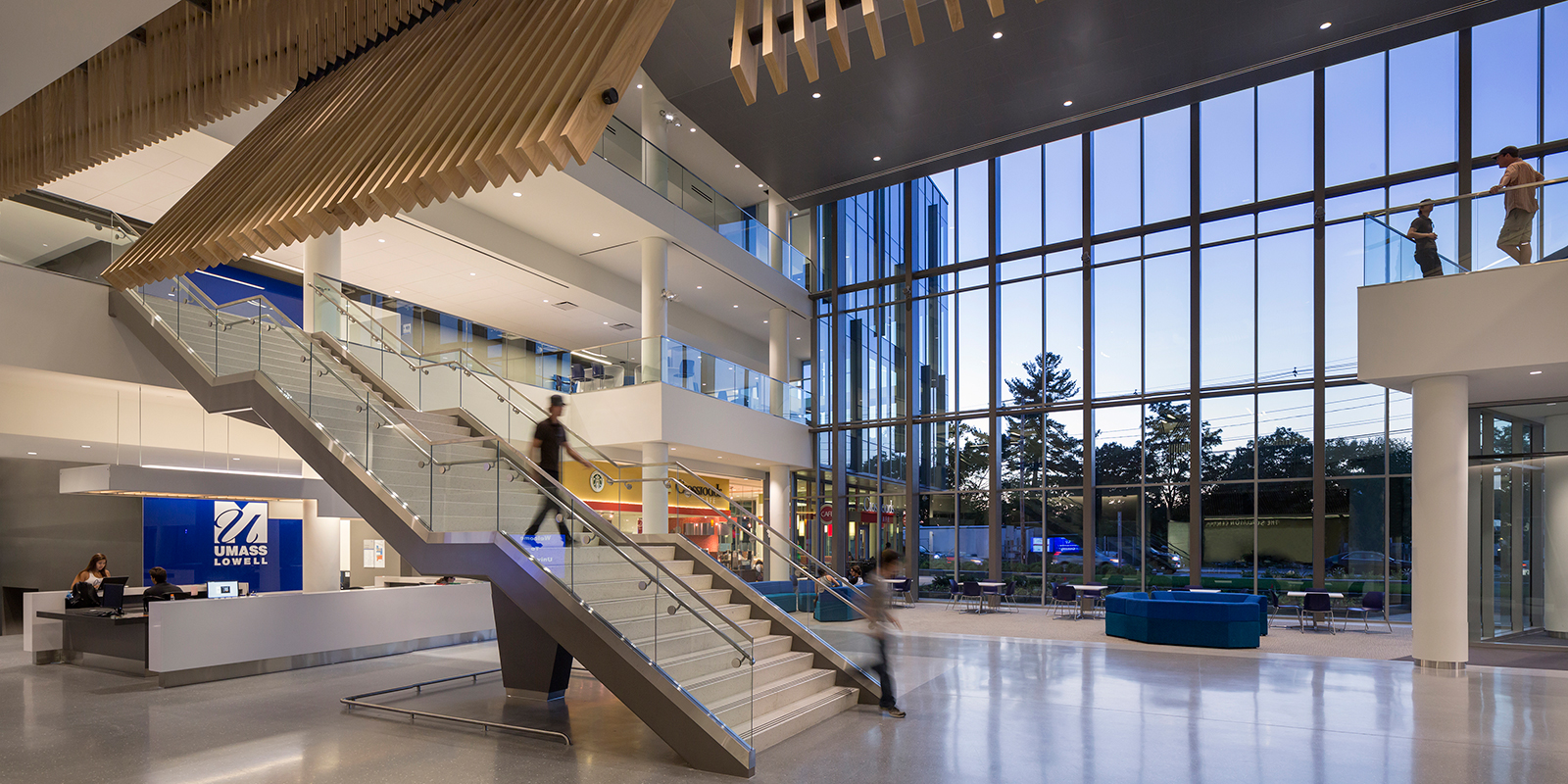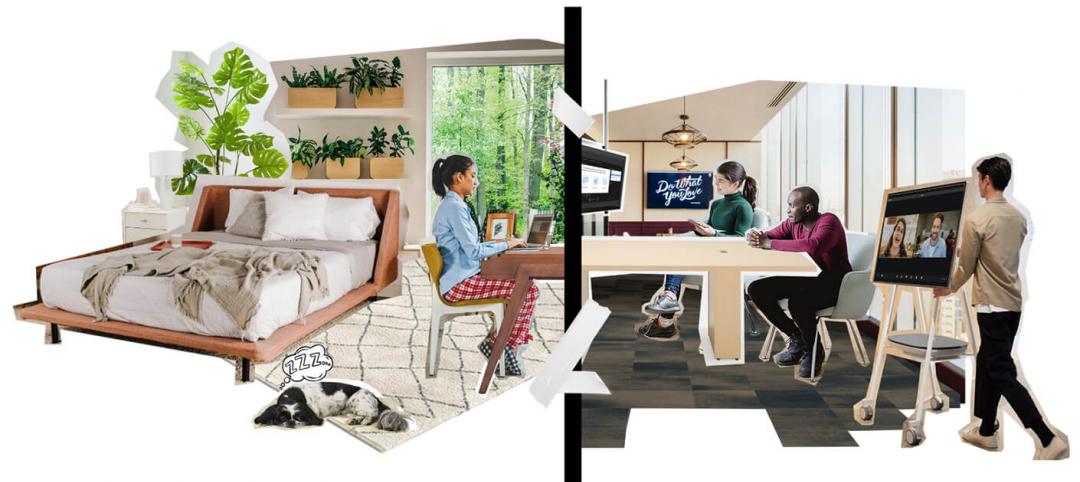Brand permeates our culture. Look no further than Apple and Starbucks. People gravitate to brands for many reasons—values they share, status and prestige, or counter-culture platforms.
Within the complex world of Higher Education, many institutions’ names are synonymous with brand for an equally broad spectrum of reasons. When top-tier institutions are discussed, the names are often regional, but the benchmarks often start with the Ivy League schools—for example, Harvard, Stanford, Cambridge, and Oxford. In most cases, the brand is strengthened further with a visit to campus. Take Locust Walk at the University of Pennsylvania, for instance; this incredibly beautiful and well-planned campus main street is enough to seal the deal for a student making a final choice.
Campus architecture and landscape are fundamental influences on the college brand. From picturesque heritage buildings nestled on a manicured campus green to innovative industrial maker-campuses that are integrated with research communities, the college mission and the mission of place are one.
Here are five ways campus architecture defines the college brand that higher ed administrators should consider when making plans for their campuses:
1. History and heritage matter. The stories of the births of universities, famous alums who have found their voice on campus, and the quirks that have occurred across time all factor into a brand. Students form an immediate bond with the university when immersed in this history. Creating a well-crafted story that describes the unique heritage can be integrated at multiple levels of perception at your front door. History cannot be created from scratch for relatively new campuses, but tailoring a clear message can achieve the desired effect.
2. Quality of an institution. This factor is sometimes a silent brand, one that can spread without advertising. To achieve quality in all aspects is truly aspirational for most. Top-tier quality of campus architecture and landscape can be obvious when viewed in context with peers—and it can be a differentiator. Immaculate lawns, rich natural materials, and technology that enables progressive pedagogy can all contribute to an institution’s level of quality. Quality of brand is powerful; quality at every level through an increased commitment to quality starts at the top and then infiltrates the campus mindset.
3. Innovative design. Demonstrative physical expressions in innovation have become brand statements. University missions that push past the envelope leverage their entrepreneurial spirit through the built environment. Trends in pedagogy, learning environments, student life, and sports can be teaching labs that accelerate new ideas about the spaces they inhabit. Not every building on your campus has to have the “wow” factor. Focus on what matters most to the university and its students, and celebrate it with a statement of physical innovation.
4. Connection with the surrounding environment. Fitting into the broader context of society can define a university’s alignment with its community. The knitting together of town and gown reflects the cultural nuances, demographic profile, and sharing of ideas that support the surrounding community, as well as a shared vision for integration. Brand can reflect context in a seamless story that binds its roots. Find common ground with the community in a way that can be physically present in branded identity at the campus edges.
5. What’s on the inside matters, too. Transitioning campus infrastructures to zero fossil fuels and teaching the philosophy and tactical genius that underlie these changes to those behind the scenes is happening—maybe not as fast as we would like, but it’s happening. These changes on the inside have given a voice to those who want to bring about change that is both practical and environmentally -conscious . The term “sustainability” has passed, and progressive institutions are now looking toward regenerative futures. Now is the time to change your course toward a more progressive infrastructure by establishing and broadcasting your goals with an ability to measure results.
What is next for brand on campus? Will universities hunt down prospective students through social media? Will universities continue to script their front door tour paths with a Hollywood-ready scene? Will institutions with lesser brand appeal push a new niche? The answer to these questions is yes, because while brand evokes many messages for universities and for students, it is also about competition, marketing, and survival. Architecture and the influence of the physical environment affect first impressions and lead to lasting memories—and these influences drive the power of the college brand.
About the Author: David leads Perkins+Will’s Residential Life practice, having built a national reputation in visioning the future of the built environment in higher education. He is a strong advocate for pushing the boundaries of sustainable planning and design. David is an active member in contributing thought leadership on student life and sustainability to ACUHO-I, ACUI, and SCUP.
More from Author
Perkins and Will | Sep 19, 2023
Transforming shopping malls into 21st century neighborhoods
As we reimagine the antiquated shopping mall, Marc Asnis, AICP, Associate, Perkins&Will, details four first steps to consider.
Perkins and Will | Jul 20, 2023
The co-worker as the new office amenity
Incentivizing, rather than mandating the return to the office, is the key to bringing back happy employees that want to work from the office. Spaces that are designed and curated for human-centric experiences will attract employees back into the workplace, and in turn, make office buildings thrive once again. Perkins&Will’s Wyatt Frantom offers a macro to micro view of the office market and the impact of employees on the future of work.
Perkins and Will | May 30, 2023
How design supports a more holistic approach to training
For today’s college athletes, training is no longer about cramming team practices and weight lifting sessions in between classes.
Perkins and Will | Dec 20, 2022
4 triage design innovations for shorter wait times
Perkins and Will shares a nurse's insights on triage design, and how to help emergency departments make the most of their resources.
Perkins and Will | Aug 30, 2021
The great re-shuffle & re-think
In this new hybrid environment in which we cater to how our employees work best, how will we manage new hybrid work practices and etiquette?
Perkins and Will | May 18, 2020
Global design firms collaborate on new COVID-19 mobile testing lab to bring testing to vulnerable communities worldwide
Perkins and Will, Schmidt Hammer Lassen Architects, and Arup Group develop scalable solutions for increased testing capacity within high-density and under-served neighborhoods.
Perkins and Will | Jun 7, 2019
Workplace wellness: Top 3 tips for Fitwel certification
How can thoughtful design encourage healthier choices, lifestyles, and work environments?
Perkins and Will | Feb 27, 2019
ResilientSEE: A framework to achieve resilience across scales
Conceived in the Boston studio of Perkins+Will, the ResilientSEE team developed a resilient planning framework that can be applied to other neighborhoods, cities, and countries.
Perkins and Will | Nov 28, 2018
Amazon HQ2 and the new geography of work
The big HQ2 takeaway is how geography and mobility are becoming major workplace drivers.
Perkins and Will | Sep 4, 2018
It takes more than money to fund resilience
Resilient design, much like all projects in the built environment, requires funding.
















